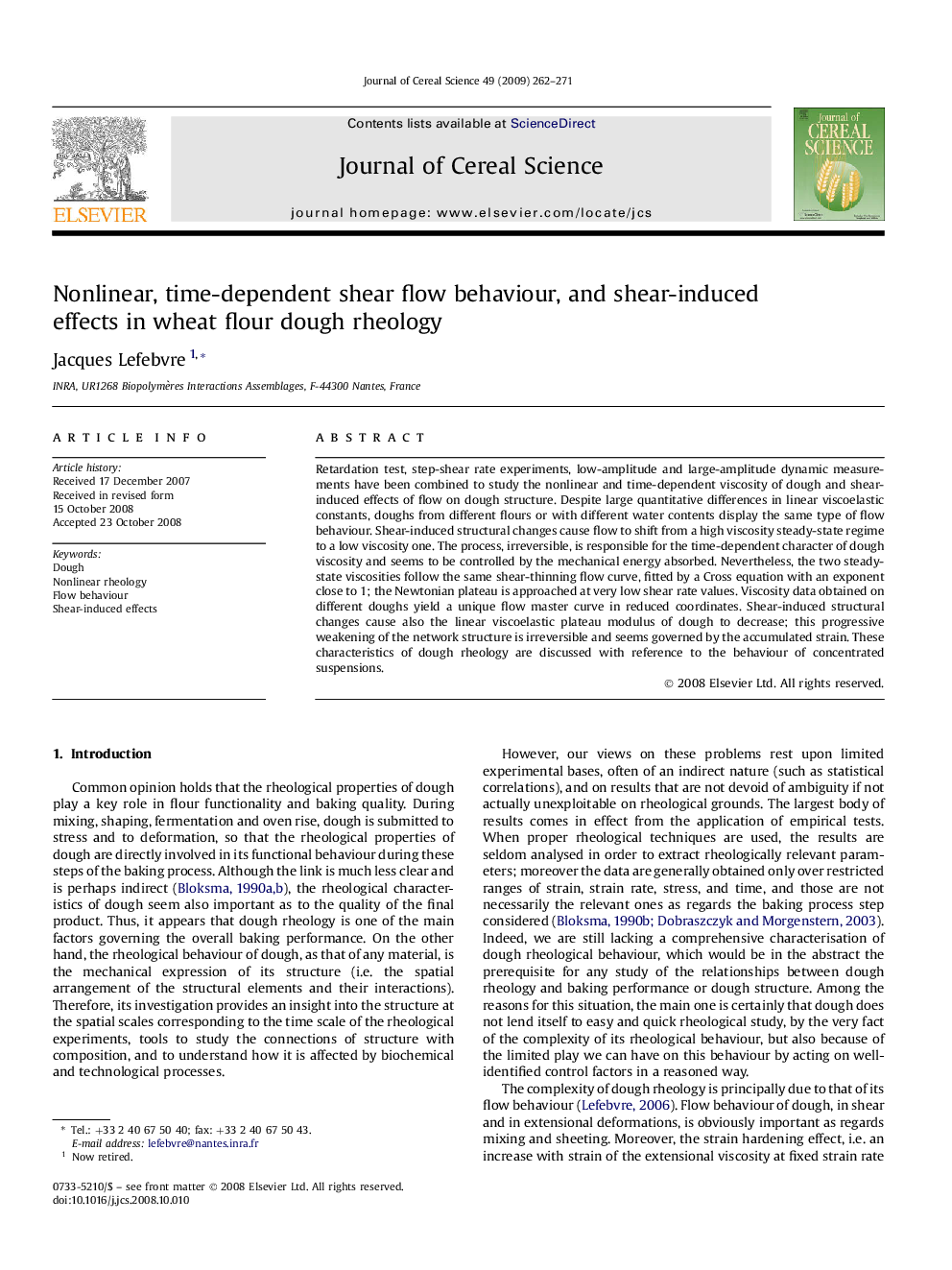| Article ID | Journal | Published Year | Pages | File Type |
|---|---|---|---|---|
| 4516680 | Journal of Cereal Science | 2009 | 10 Pages |
Retardation test, step-shear rate experiments, low-amplitude and large-amplitude dynamic measurements have been combined to study the nonlinear and time-dependent viscosity of dough and shear-induced effects of flow on dough structure. Despite large quantitative differences in linear viscoelastic constants, doughs from different flours or with different water contents display the same type of flow behaviour. Shear-induced structural changes cause flow to shift from a high viscosity steady-state regime to a low viscosity one. The process, irreversible, is responsible for the time-dependent character of dough viscosity and seems to be controlled by the mechanical energy absorbed. Nevertheless, the two steady-state viscosities follow the same shear-thinning flow curve, fitted by a Cross equation with an exponent close to 1; the Newtonian plateau is approached at very low shear rate values. Viscosity data obtained on different doughs yield a unique flow master curve in reduced coordinates. Shear-induced structural changes cause also the linear viscoelastic plateau modulus of dough to decrease; this progressive weakening of the network structure is irreversible and seems governed by the accumulated strain. These characteristics of dough rheology are discussed with reference to the behaviour of concentrated suspensions.
